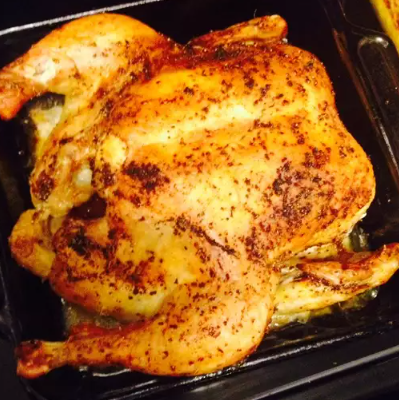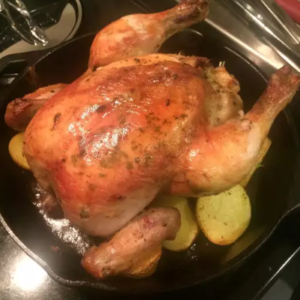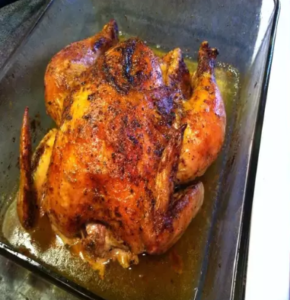Introduction to the Art of Roasting Chicken: Should you cover a chicken when roasting?
Roasting a chicken might seem straightforward, but a simple question often perplexes many home cooks: Should you cover a chicken when roasting? This age-old debate touches on more than just preference; it’s about achieving that perfect balance between juiciness and a delectable crispy skin. In this comprehensive guide, we’ll delve deep into the pros and cons of covering chicken during roasting, explore various cooking techniques, and hear from professional chefs to help you make the best choice for your next culinary adventure.
Understanding the Basics
A. What Does Covering the Chicken Do?
Covering a chicken while it roasts can really be a game-changer. It creates a steamy environment that’s terrific for keeping the chicken moist and tender. Especially for those tougher cuts, like the leg or thigh, trapping steam ensures they cook evenly, without drying out too quickly. But it’s not all rainbows and butterflies! Covering can sometimes rob you of that crispy, golden skin that many of us absolutely adore.
B. Uncovered Roasting
On the flip side, leaving your chicken as naked as a jaybird in the oven has its perks, particularly when you’re after that irresistibly crispy skin. Without cover, the skin gets a chance to dry out and crisp up beautifully, giving you that perfect, crackling bite. Not to mention, it allows any excess fat to drip away, resulting in a slightly healthier dish. Let’s just say, if you’re in the camp of crispy-skin lovers, uncovering might just be your path to poultry perfection!
In our next section, we’ll dive into the nitty-gritty of covering versus uncovering, looking at everything from moisture retention to optimal seasoning techniques. Stay tuned as we peel back the layers of this culinary conundrum!
Detailed Considerations
A. The Benefits and Drawbacks of Covering Chicken When Roasting
When you toss a cover on that roasting pan, it’s like throwing a mini sauna party for your chicken. The benefits? Moisture galore! This can be particularly heavenly for those tougher cuts that tend to dry out faster than a puddle in the Sahara. Covered roasting ensures that these cuts stay juicy and tender, cooking evenly without turning into shoe leather. However, it’s not without its cons. The major downside is missing out on that crispy skin that many of us crave. Covered chicken might also take a tad longer to cook, which could throw a wrench in your dinner timing.
B. The Science Behind Chicken Roasting: How Covering Affects the Outcome
It’s a bit of a culinary science experiment, really. Covering chicken creates a steamy haven that helps the meat stay juicy. The steam ensures even cooking and prevents dry spots, but it can also lead to a softer, less appealing skin. The choice to cover or not often boils down to a trade-off between texture and moisture. You might have to play around a bit—cover it initially, then whip off the cover towards the end to let that skin crisp up.
C. Cooking Different Cuts of Chicken: Which Ones Need to be Covered When Roasting?
Not all chicken cuts are created equal when it comes to roasting. Whole chickens, particularly larger ones, might need a bit of covering early on to keep them from drying out. For these hefty birds, start them under cover, then let them finish in the open to achieve skin that’s crispy to the touch. Smaller cuts like breasts and thighs, on the other hand, generally fare better when left uncovered, especially if you’re aiming for that delightful crunch.
By understanding these nuances, you can tailor your roasting technique to suit the chicken cut and your taste preferences, ensuring every meal is nothing short of spectacular. Next up, we’ll explore some top-tier tips and tricks for roasting your chicken to perfection, with a sprinkle of expert advice on seasoning and oven temperatures. Stay tuned for Part 3, where we turn up the heat on our roasting mastery!
Techniques and Tips
A. Tips and Tricks for Perfectly Roasting Chicken Without Covering
Roasting chicken uncovered is the golden ticket to that crispy, golden-brown skin that’s just bursting with flavor. Here’s how to nail it: Start by letting your chicken sit out until it reaches room temperature, which encourages even cooking. Season generously – think salt, pepper, and your favorite herbs or spices. Then, let it roast in a preheated oven, and don’t be shy about basting it a few times to keep it moist on the inside while it crisps up on the outside.
B. Covering Chicken for More Flavor: Seasoning Tips and Techniques
Now, if you decide to cover your chicken, there’s no reason it can’t be just as flavorful. Enhance the taste by slathering your bird in a mix of herbs, spices, butter, or oil before it goes into the oven. This creates a delicious layer that traps in flavors and juices. Another trick is to marinate your chicken in a zesty or savory liquid overnight – think citrus blends, garlic, or soy-based concoctions – to really pack a punch.
C. The Role of Oven Temperature in Determining Whether to Cover or Not
The right oven temperature is crucial for roasting success. Too hot, and your chicken might char on the outside before it’s done on the inside. Too low, and you could end up with a rubbery texture. Aim for a sweet spot between 350-450°F – the exact temp might depend on your oven and the size of your chicken. Experiment a bit: higher temperatures for a crispier finish, lower for a slower, more even roast.
In the next section, we’ll hear from the pros. What do professional chefs say about covering chicken when roasting? Do they prefer the steamy embrace of a covered pan or the dry heat that crisps up the skin? Tune in to Part 4 for insights from the culinary experts and the final verdict in our roasting debate!


 Expert Opinions and Conclusions
Expert Opinions and Conclusions